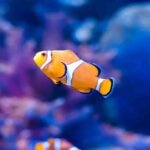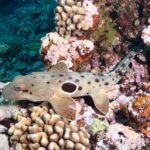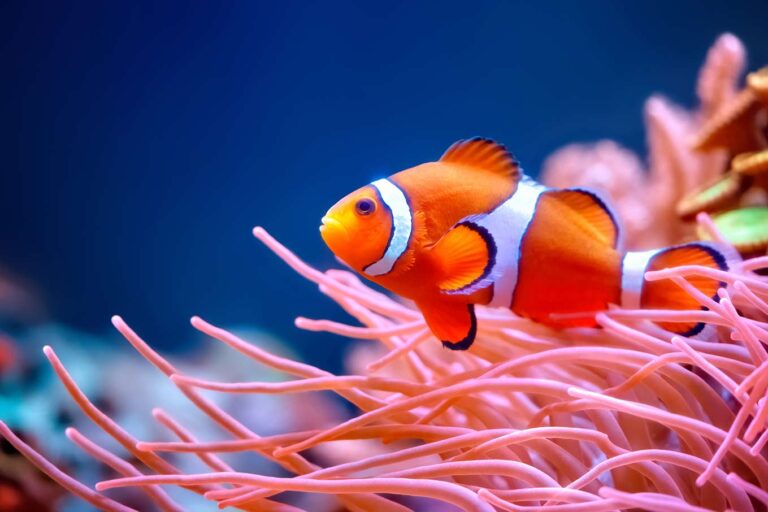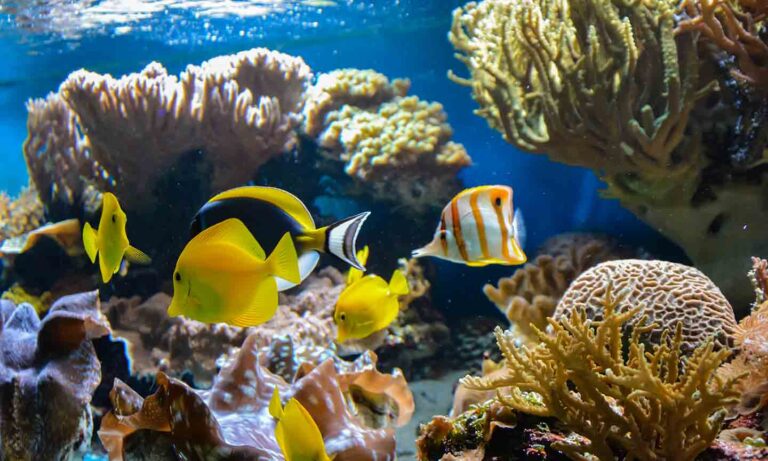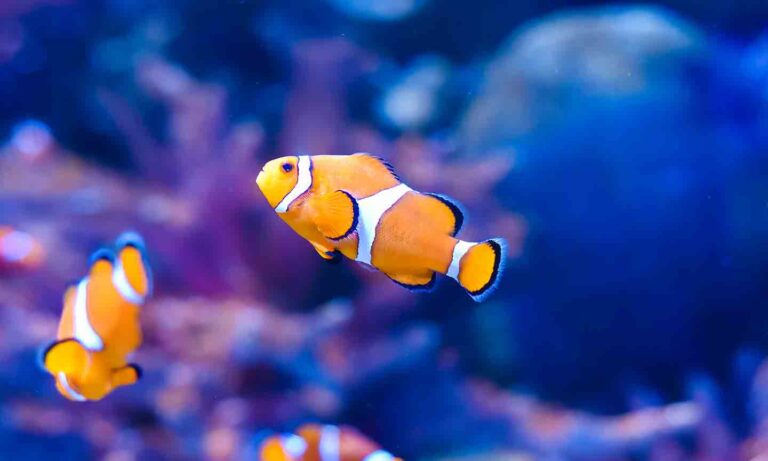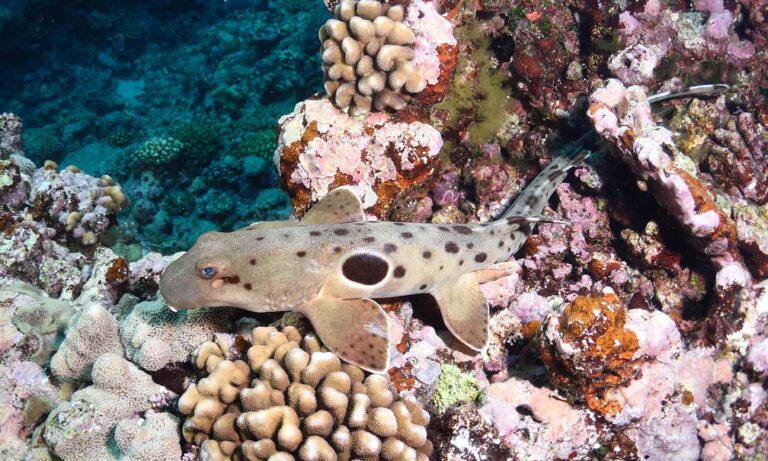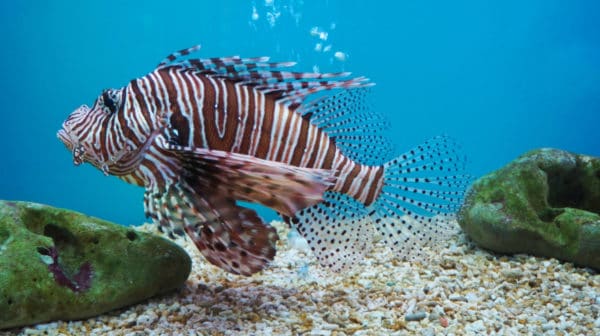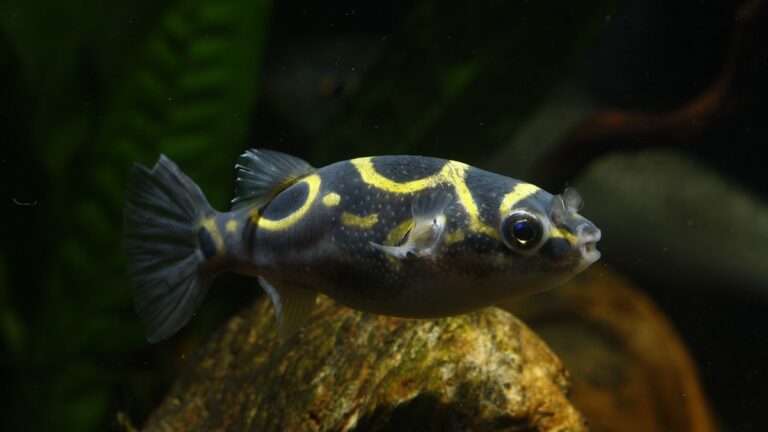A Beginner’s Guide to Keeping Seahorses
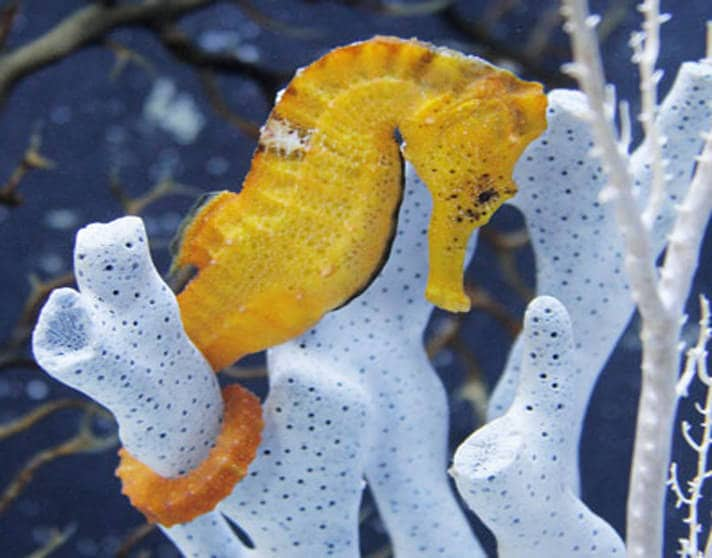
Photo by Chewy
Aquarium hobbyists are often on the lookout for unique animals to stock in their miniature ecosystems. We like to look for striking colors, unique personalities or differing physical forms to accent and complement our tanks. Nothing fits these descriptions more aptly than seahorses.
The seahorse is almost mythical in form, with its horselike head strangely mated with an armored, serpentine body. Seahorses are fantastic creatures to observe in aquaria, and with a little advanced planning and research, they are not much more difficult to keep than many other fish.
I hope to dispel some of the mystery behind keeping seahorses, as well as demonstrate the basic requirements for building and maintaining a stable environment so that even a “beginner” aquarist may enjoy these fascinating and beautiful animals.
Seahorse Basics
There are many different species of seahorses available to marine aquarists these days, and some species have very different requirements for their environment. The most common horses will reach a similar full-grown size, which is 5 to 8 inches in height. For now, let’s focus on these normal-sized horses, specifically Hippocampus erectus, H. reidi and H. barbouri.
Seahorses are relatively lower on the evolutionary scale than most bony fishes, and there are a few differences you should know that will affect how you keep these animals. First, and perhaps most importantly, seahorse gills are less efficient than those of other bony fishes. Their method of gas exchange is limited in comparison. Also, seahorses lack true stomachs. Food passes through their digestive systems with surprising speed. Because of this, they have to eat more often to maintain their energy levels.
Seahorse keepers should also keep in mind that seahorses lack scales. Instead, their structure is based on an exoskeleton that is covered with skin-like tissue. Because of this, seahorses are sometimes more prone to bacterial or viral infections, so the aquarist should watch for sores on their seahorses’ skin.
The seahorse’s mouth is uniquely different from almost every other bony fish. This elongated snout is adapted to suck small prey in at remarkable speeds. Do not be fooled by their small mouths, however. I have seen 4-inch seahorses attack and consume small shrimp more than half an inch long with little difficulty. Remember that any peppermint shrimp tankmates may be eaten.
The Horse "Stable"
Once you decide to keep seahorses, you should really start with a new fish aquarium. There are too many factors to consider and too many restrictions to abide by when trying to add seahorses to an established aquarium. Start by considering the size of your tank. Seahorses are vertically oriented animals and utilize the water column to its fullest extent. In other words, the height of your aquarium is just as important as its footprint. Find a tank that is at least 18 inches tall—the taller, the better.
I chose a 37-gallon tall “cube” for my seahorse environment. This gave me a roughly 19-by-19-inch footprint and 24 inches of height for the horses to play with. A tank this size, if properly filtered, will be an adequate home for three or four seahorses without causing them stress, or two to three horses if you plan on adding a different fish or two. The standard fluorescent strip light that comes with most aquariums is sufficient for seahorses in most cases. Seahorses don’t like as much light as a normal reef tank would provide, which you must take into consideration if you wish to have a couple of corals in the tank, as well.
Controlling the temperature of a seahorse tank is also important. Seahorses prefer cooler water than most tropical aquaria, so the tank should be kept cooler for their maximum comfort. A tank temperature of 74 to 76 degrees Fahrenheit will be suitable. Most of the time, this cooler temperature can be controlled by running a fan over the top of the tank, but you may want to entertain the idea of possibly using a chiller if you live in warmer climates.
Filtration
Filtration is a hotly debated topic in any aquarium setting, and seahorse tanks are no different. A good-quality hang-on-the-back (HOB) filter will be suitable for seahorse tanks—even preferable in some ways.
Seahorses should not have a large amount of flow in their environment. They are relatively weak swimmers, and they would be buffeted constantly by the flow of a strong canister filter or most overflow-style filters. Overflow filters are a good option, provided the return flow is not too strong for the tank size. If you do choose an HOB filter, you will need one that is rated for a larger tank than you will be keeping. Because of their primitive digestive systems, a single seahorse can create a large amount of undigested food that essentially passes straight through its gut, only to decompose in the aquarium. Filtering this out becomes a full-time task.
Water movement from a lower-flow HOB filter also becomes an issue. With reduced current comes reduced oxygen in the water. A seahorse’s primitive gills have a hard time getting enough oxygen from their environment; in fact, seahorses will die from hypoxia in tanks with inadequate filtration. Low flow also has the possibility to produce dead zones or areas of extremely low oxygen.
A simple and elegant solution is available in the form of a protein skimmer. Not only will a skimmer help reduce nitrates and skim out excess organics, it will help aerate the water and increase the aquarium’s oxygen content. Simply put, a protein skimmer—even an inexpensive one—is an essential piece of equipment for any seahorse aquarium.
Another option is the addition of a single low-flow powerhead. The commonly held belief that a seahorse cannot tolerate any current is a misconception; a healthy horse can handle a strong flow if it has to. But please do not subject even healthy seahorses to strong water flow. The idea of watching seahorses zooming around your tank or surfing the current may be amusing, but this is not recommended for seahorses. Rather, a small powerhead near the bottom or back of the tank is enough to generate a gentle current that will eliminate dead zones and still not stress your seahorse.
Aquacultured Seahorses
Seahorses were once considered to be very difficult animals to keep. At one time, they were only caught in the wild. Wild specimens usually only lasted for a few months in home aquariums before succumbing to infection or starvation.
Recent years, however, have revealed a breakthrough with seahorse keeping: captive-bred seahorses. Captive-bred horses outshine their wild brethren in many different ways. They are weaned on frozen prepared foods, are hardier in a wider range of environments and are almost always disease-free. Finally, and probably most importantly, captive-bred seahorses are not removed from the wild, so we are not contributing toward the depletion of them from the ocean.
Tankmates and environment
A seahorse tank is going to be set up slightly differently than a FOWLR (fish only with live rock) or a reef environment; however, the differences are minor. An oft-repeated recommendation is that seahorses need to be housed in species-only tanks. While it is true that keeping horses with other tankmates requires a good deal of advanced planning, it is not difficult to find many species of fish, invertebrates and corals that will be acceptable seahorse tankmates. There are plenty of online references to help plan your tank, most notably at seahorse.org, but here is a bare-bones list of what you may expect to add to your seahorse setup.
Fish
There are many slow, cautious fish that make excellent tankmates for seahorses. Scooter blennies, firefish, Banggai and pajama cardinals, and royal grammas are generally considered safe tankmates. Many small goby species are acceptable.
The key to keeping other fish with your horses is their activity level. Fish that have a high activity level will easily outcompete the seahorse for both fish food and swimming space. Although fish add visual interest and diversity in a seahorse tank, I strongly recommend that you start with your seahorses and add only a couple fish from this list afterward. Let the seahorses get used to their environment before introducing any strangers.
Invertebrates
Most snails are fine for seahorse tanks and are in fact recommended. Small hermit crabs, such as the blue-legged varieties, are acceptable and help clean up leftover food.
Most other crabs are best left out of a seahorse tank, as they might try to nip at a horse’s tail.
Shrimp are also usually left out of a seahorse setup. Small shrimp would likely become food for the seahorse, while larger shrimp may outcompete them for food. Anemones, because of their stinging cells, have absolutely no business in a seahorse environment.
Corals
A very hotly debated topic these days is whether you can keep seahorses in a reef environment. My answer is generally no, but there is a twist. You may not keep many seahorses in a reef tank, but you can keep quite a few reef denizens in a seahorse tank.
Start with your lighting. Seahorses usually prefer lower light levels, so make sure to choose your corals accordingly. Also, most large-tentacled large polyped stony (LPS) corals should stay out of seahorse tanks. A good rule of thumb is that if it looks like an anemone, it will act like one. Large LPS corals have great numbers of stinging cells that can and will hurt the tissue of a seahorse’s hide. There are some exceptions to this rule: some LPS species, such as Acanthastrea, Favites and Lobophyllia, are relatively safe tankmates that will do well under T5 lighting.
Even with these restrictions, there is still a large number of seahorse-friendly corals to choose from. Colony polyp corals, such as zoanthids, green star polyps, clove or daisy polyps, mushrooms and ricordias, are generally fine to keep with seahorses. Easy gorgonians, such as silver muricea, corky fingers, purple frilly gorgonia and purple bush gorgonia, will do well with a little specific care. Mushroom corals and ricordias are also generally acceptable. Faux corals are becoming more popular as new varieties that look almost exactly like the real thing come to market.
Hitching posts
Seahorses need structures of some kind to hitch onto during the day. Most of their days are spent with their tails wrapped around some easy-to-grab hitching spots, swiveling their independent eyes in every direction to try and hunt for food. Gorgonians are excellent for this behavior, as are many faux corals and kelp. My two yellow H. reidi spend most of the day hitched to a faux red kelp that I have “planted” in the back corner of my tank. In the evenings, they migrate to the yellow and orange gorgonians near the front of the tank, often with their little faces pointed right at me as they wait for their supper.
Macroalgae
Many seahorses are found in and around relatively shallow seagrass flats, as well as seagrass zones that border the calmer inner portions of a reef. While most seagrasses are considered protected species and should not be collected, there are many similar macroalgae that can be substituted in a seahorse aquarium. If your local laws permit it, different species of Caulerpa algae are excellent candidates for a planted seahorse tank.
Caulerpa is often used in refugiums for its potential to filter out ammonia and nitrate, which makes it all the more desirable for a seahorse tank. Be sure to check your state regulations before using Caulerpa; it is considered an invasive species in some areas. Because Caulerpa can grow so quickly, it will need to be pruned to avoid choking out any coral you may have. Other slower-growing algae that do well include Gracilaria, Laurencia and Bryothamnion flame algae.
Live rock
I recommend live rock in a seahorse tank. Just be sure that it has been properly cured; that is, pests, such as large bristleworms and mantis shrimp, should be absent from the rock. Bristleworms may not be a huge problem, but a mantis shrimp would likely eventually kill any seahorse tankmate.
Care and Feeding
The best food for captive-bred seahorses is frozen Mysis shrimp. Because seahorses are such slow, methodical feeders, you must decide how best to present the food to them. You can hand-feed them with a little patience, spot-feed a few shrimp in front of them or set up a feeding station for them where they can eat.
In most cases, the most useful tool is going to be a turkey baster. With the baster, you can present shrimp one at a time in front of the animal, suck them back up if the horse doesn’t take them or carefully deposit a larger amount of shrimp at a feeding station. Most seahorses should be fed six to eight shrimp twice a day. Larger horses will eat more, so observing your animals is important.
Feeding Stations
Although I love hand-feeding my seahorses, I find that a feeding station is much more convenient. A feeding station consists of any cup-like object that the horses can come up to. I use a small, clear glass culinary prep bowl, but I have seen people use many different items. Large empty shells, flat depressions in a piece of live rock or a store-bought feeder station will work. Provide some hitching posts around the cup for the seahorses to latch onto.
In order to get them started with a feeding cup, get the horses’ attention with a single shrimp and then guide it over to the feeding station. Present your shrimp in front of the seahorse by releasing one or two from the turkey baster in front of its snout. With a little practice, you can keep a single shrimp balanced delicately at the tip of your turkey baster while you slowly guide the shrimp and the seahorse over to the dinner bowl.
Alternatively, you can hold a shrimp by the tail with tweezers and attract the seahorses’ attention. Usually you will only need to do this once or twice before they catch on. Soon you will see them motoring over to their feed bowl as soon as they see you walk in the room.
Health and Disease Prevention
I have been asked before about a certain seahorse’s coloration. Color varies from individual to individual rather than from species to species. There is no species of “yellow horses.” I have seen yellow H. reidi, yellow H. kuda and yellow H. erectus horses. The color of a seahorse can change depending on its mood, stress level and environment. For example, my H. reidi male changes to a bright yellow, and his stripes become highly pronounced when he courts the female. When I first introduced them to the tank, they both lost most of their yellow coloration and assumed a mottled brown that blended in with the live rock.
The bottom line is simple: don’t buy your horse on color alone.
Closely monitor your seahorses for color changes; a radical color change may be the result of stress. Seahorses have individualized patterns on their hides called “saddle markings,” which do not usually change when a seahorse changes camouflage coloration, though they may become more pronounced or fade slightly. A stressed horse, however, may lose these saddle markings completely.
Seahorses are prone to most of the same ailments as other fish. The diagnosis and description of seahorse disease could fill a full volume by itself. Detailed diagnosis and care articles are available online with a quick Internet search. To cover the basics, however, remember that though they are so visually different, seahorses will still occasionally come down with the most common of marine parasites: ich. Of course, the best cure for ich is prevention, so be vigilant and quarantine any animal before it goes into your aquarium system.
Seahorses are also prone to developing skin lesions from time to time. Remember that seahorses do not have scales, and the likeliness of a bacterial infection is increased if a horse’s hide is scraped. Be prepared with a small hospital tank, just in case you need to remove and treat a seahorse. And now you are ready for your own seahorse tank!
I hope this guide has been helpful to you. Although a seahorse aquarium requires a little more work to start up, the benefits of the finished product far outweigh the initial planning required. Seahorse aquariums are both incredibly relaxing and completely enthralling at the same time. Don’t be surprised when you find yourself spending time sitting in front of the tank and just watching. After all, your seahorses will probably be watching you back.


